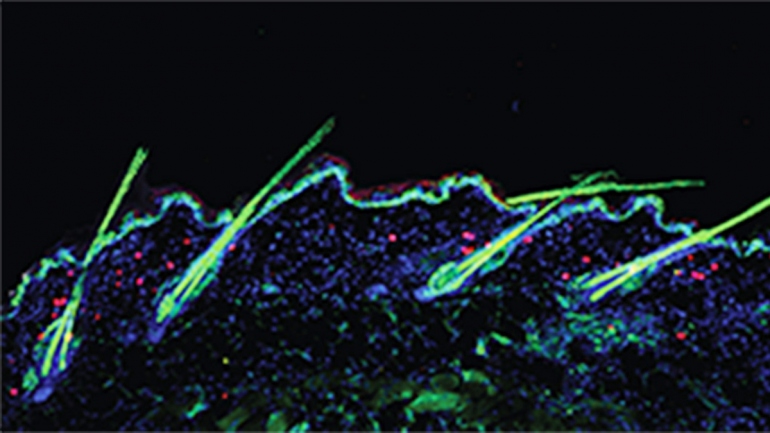
In experiments in mice, UC San Francisco researchers have discovered that regulatory T cells (Tregs; pronounced
«Our hair follicles are constantly recycling: when a hair falls out, a portion of the hair follicle has to grow back," said Michael Rosenblum, MD, PhD, an assistant professor of dermatology at UCSF and senior author on the new paper. «This has been thought to be an entirely stem
The new study — published online May 26 in Cell — suggests that defects in Tregs could be responsible for alopecia areata, a common autoimmune disorder that causes hair loss, and could potentially play a role in other forms of baldness, including male pattern baldness, Rosenblum said. Since the same stem cells are responsible for helping heal the skin after injury, the study raises the possibility that Tregs may play a key role in wound repair as well.
Anti-Inflammatory Immune Cells Activate Skin Stem Cells
Normally Tregs act as peacekeepers and diplomats, informing the rest of the immune system of the difference between friend and foe. When Tregs don’t function properly, we may develop allergies to harmless substances like peanut protein or cat dander, or suffer from autoimmune disorders in which the immune system turns on the body’s own tissues.
Like other immune cells, most Tregs reside in the body’s lymph nodes, but some live permanently in other tissues, where they seem to have evolved to assist with local metabolic functions as well as playing their normal
Rosenblum, who is both an immunologist and a dermatologist, wanted to better understand the role of these resident immune cells in skin health. To do this, he and his team developed a technique for temporarily removing Tregs from the skin. But when they shaved patches of hair from these mice to make observations of the affected skin, they made a surprising discovery. «We quickly noticed that the shaved patches of hair never grew back, and we thought, ‘Hmm, now that’s interesting,’" Rosenblum said. «We realized we had to delve into this further.»
In the new research, led by UCSF postdoctoral fellow and first author Niwa Ali, PhD, several lines of evidence suggested that Tregs play a role in triggering hair follicle regeneration.
First, imaging experiments revealed that Tregs have a close relationship with the stem cells that reside within hair follicles and allow them to regenerate: the number of active Tregs clustering around follicle stem cells typically swells by
Tregs’ role in triggering hair growth did not appear related to their normal ability to tamp down tissue inflammation, the researchers found. Instead, they discovered that Tregs trigger stem cell activation directly through a common
«It’s as if the skin stem cells and Tregs have
Relevance to Autoimmune Hair Loss
Rosenblum said the findings may have implications for alopecia areata, an autoimmune disease that interferes with hair follicle regeneration and causes patients to lose hair in patches from their scalp, eyebrows, and faces. Alopecia is among the most common human autoimmune diseases — it’s as common as rheumatoid arthritis, and more common than type 1 diabetes — but scientists have little idea what causes it.
After his team first observed hair loss in
The study also adds to a growing sense that immune cells play much broader roles in tissue biology than had previously been appreciated, said Rosenblum, who plans to explore whether Tregs in the skin also play a role in wound healing, since the same follicle stem cells are involved in regenerating skin following injury.
«We think of immune cells as coming into a tissue to fight infection, while stem cells are there to regenerate the tissue after it’s damaged," he said. «But what we found here is that stem cells and immune cells have to work together to make regeneration possible.»
Source: http://www.ucsf.edu/news/2017/05/407121/new-hair-growth-mechanism-discovered


